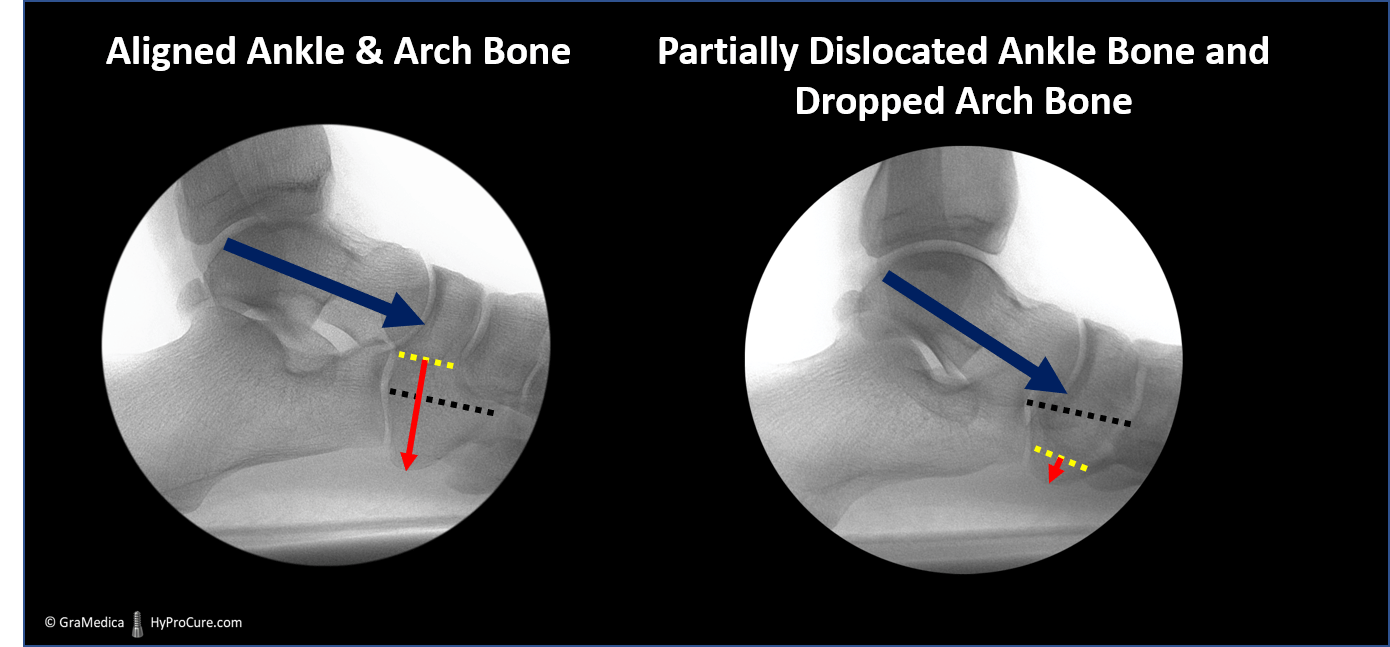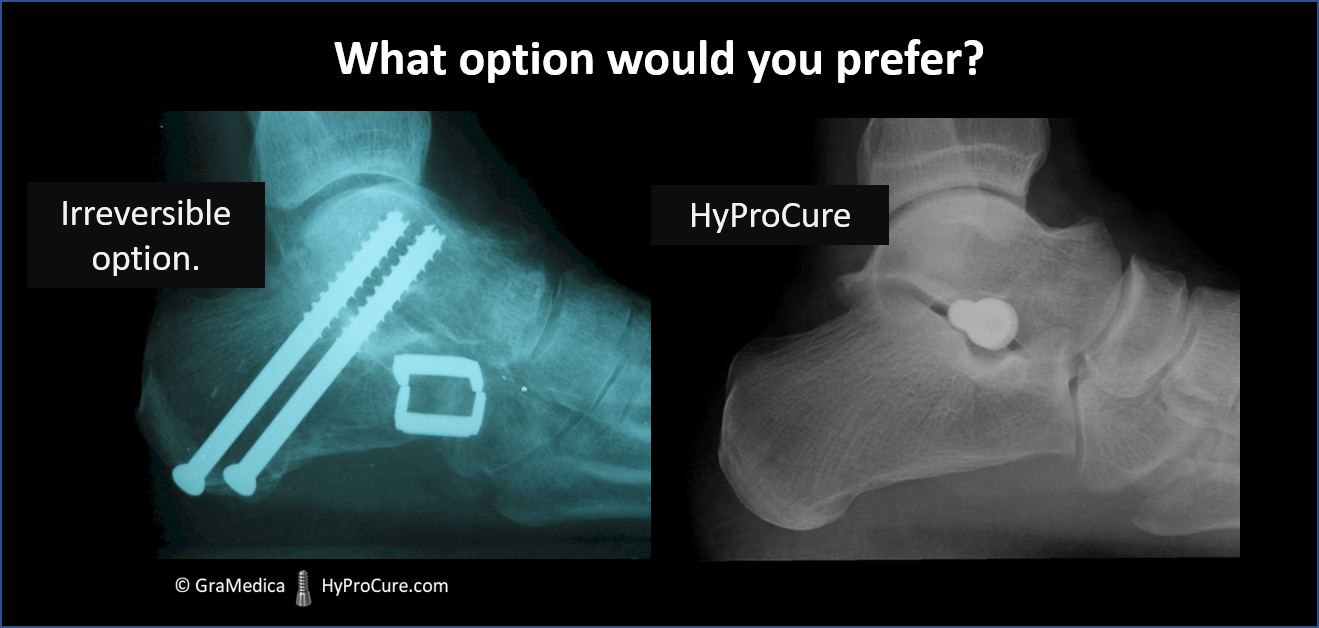Flat feet/fallen arches
Home » Products » HyProCure » HyProCure Patient Education » What Does HyProCure Treat? » Flat feet/fallen arches
Falling/Fallen Arches and flatfeet/Pes Planus
One of the most recognized conditions related to ankle bone instability is a lower than normal arch. It is important to know you can have ankle bone instability without a lower than normal arch, but it is unheard of to have a lower than normal arch without ankle bone instability.
Other Common Symptoms of Ankle Bone Instability:
Why does the arch collapse?
There is only one reason – the arch bone is being forced from its normal position and alignment. There is only one force that can push the arch bone out of alignment – yep you guessed it – it’s a partially dislocated ankle bone. Look at the picture below. You will see the ankle bone and the arch bones are identified.The arch bone should be located above the 1/2 line of the bone in front of the heel bone called the cuboid.
This image shows the comparison between an aligned ankle and arch bone.
The dotted yellow line is the bottom part of the arch bone. See how the bottom of the arch bone is above the vertical mid-way line of the bone in front of the heel bone? The red arrow shows the distance between the bottom of the arch bone to the bottom of the other bone. The next image shows a partially displaced/dislocated ankle bone. The bottom of the arch bone, yellow dotted line, has fallen below the vertical mid-way line of the cuboid bone. Also, notice how the red arrow has significantly decreased in length. This is a fallen arch.
This video shows the effect of a stable ankle bone and minimal motion of the arch bone compared to ankle bone instability and a falling/raising arch bone.
Why are fallen arches a “bad” thing?
Fallen arches and flat feet are a very “bad” thing. It is very surprising to find internet sites and physicians who claim these are “normal.” This is absolutely NOT TRUE. That’s like saying it’s normal to have flat or worn-out tires on your car. Continue to look at all of the other symptoms related to ankle bone instability and you will see that the medical evidence is clear that this is a disease entity that demands greater attention. One of the main secondary diseases related to arch bone drop is excessive strain on the posterior tibial tendon. This used to be known as “posterior tibial tendon dysfunction” and was said to be the cause of “adult acquired flat foot/feet.” The posterior tibial tendon is the major tendon that is supposed to support the inner arch. When the arch bone falls, the ligaments that attach to the arch bone are stretched. This sends a signal to the spine that in turn forces the tibialis posterior muscle to tighten. The tightening pulls the tendon that passes under the arch bone. The tendon cannot prevent the dropping of the arch bone and eventually, after more than 100 million steps, the tendon simply gets stretched out like an over-stretched rubber band.What happens if I don’t treat my flexible falling arch?
Fallen arches are not normal. This is an orthopedic disease entity that, like any other disease entity, will never go away on its own. It will never get better; it is guaranteed to progressively get worse. Every step taken leads to tissue trauma and the body will try to respond by various forms of compensation. The result is bone spurs, an over-stretched tendon, and a rigid flat foot. The only treatment option is rearfoot reconstructive surgery.Ankle bone instability and a fallen arch bone is a dynamic deformity. The displacement and lowering of the arch only occur when there is weight on the foot when standing/walking. Eventually, it becomes a fixed deformity.
Preventative measures should be initiated with any disease process.
The sooner an effective treatment is provided, the better the prognosis. A conservative option, like HyProCure, realigns the ankle bone on the heel bone. However, when the ankle bone displacement becomes fixed, when it can no longer be placed onto its normal alignment on the heel bone, then the only option is reconstructive surgery.What’s the best form of treatment?
Unfortunately, there is not a single non-surgical option that can realign and stabilize the ankle bone.
Any non-surgical form of treatment will be ineffective in preventing continued strain to the inner foot. Non-surgical forms of treatment can provide temporary relief, but the underlying disease process is still present. Every step taken is a step closer to irreversible tissue damage.
The first step to a long-term treatment plan is to identify if the ankle bone displacement is flexible or fixed. If the ankle bone can be repositioned on the heel bone, the navicular bone will be elevated. Instantly, the strain on the posterior tibial tendon is reduced/normalized. If ankle bone instability is found, the best form of treatment is the insertion of HyProCure into the sinus tarsi space. HyProCure is the only treatment proven to prevent the arch bone from dropping (DOI: 10.1053/j.jfas.2011.04.027).







